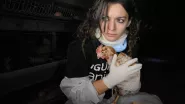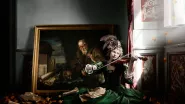The first time I watched
Lost in Translation
(2003), I wasn’t aware of two things. The first one, was that it would become an irony to watch it with my husband (back then my boyfriend) given the fact that Coppola’s inspiration for that story came from her failed marriage with Spike Jonze. The second one, was that this story would haunt me forever.
Throughout the years, I have revisited this story more times than I would like to admit. Later on, During this time, I watched some of her other films, like
Somewhere
(2010),
The Virgin Suicides
(1999), and
Marie Antoinette
(2006).
The very first thing that caught my eye in her films was her use of lighting. Whether the story takes place in LA, Tokyo, Marie Antoinette’s France or somewhere else, the light shines in one way or another, ending up being part of the story. The light builds emotion, like when it takes on some blue hues as it is seen in the last scenes from
The Virgin Suicides
, when the four remaining sisters commit suicide. Frequently, blue is associated with sadness which is the predominant emotion in this scene.

I think this is the reason why her use of color has found a perfect audience on Tumblr, where frames from her movies have become iconic. The scene of Scarlet Johansson scanning through Tokyo’s skyline from the window of her hotel room while she is listening to music almost got stuck permanently in my head so many times because I saw it reposted.

Here is where the magic of her vision lies: the ability to transform what could be otherwise a dull scene into something timeless. In this case, the reason being that she used the visuals to convey Johansson’s character at the moment: the loneliness and overwhelming sensation Tokyo produced in her.
In the same vein, I also remember the scene from
Marie Antoinette
where there are a pair of Converse sneakers in the background, an undeniable and well-thought anachronism that is a perfect Easter egg. These are the kind of details that make her films memorable.

Even though she didn’t study filmmaking and never consider it, she has a natural skill to know how to transform the stories that, in her own words, daunt her, into beautiful visual pieces.
Some would say that it’s genetics doing its job, but I think there’s much more in her work that can’t be attributed to a good heritage. Her long takes, close-ups and languid camera movements envelop us in what could be ordinaries stories.




